Run and Monitor the Orchestration
Learning Objectives
After completing this unit, you’ll be able to:
- Describe how to monitor Orchestration Runs.
- Describe how to monitor Orchestration Work Items.
- Describe how to debug an in-progress orchestration.
Follow Along with Trail Together
Want to follow along with an expert as you work through this step? Take a look at this video, part of the Trail Together series.
(This clip starts at the 1:01:15 minute mark, in case you want to rewind and watch the beginning of the step again.)
Run the Orchestration
The final stage is added and orchestration is complete. Now it's time to run it!
In this unit, we show you the steps to run the orchestration to create work items. We don’t have any hands-on challenges in this unit, but if you want to practice, you can follow along. Note that your developer org does not have candidates or a hiring manager pre-created for you.
To start the orchestration:
- Click App Launcher.
- Click Recruiting.
- To create a new position, click Positions.

- Click New.
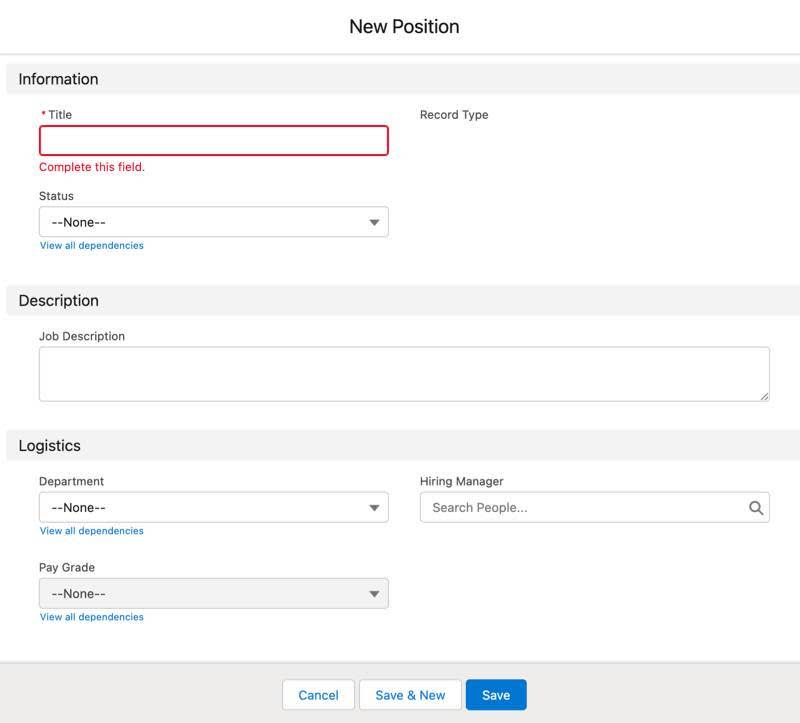
- In Title, enter the name of the new position being created.
- From the Status menu, select New.
- In Description, enter the job description for the new position.
- In Department, select an option from the list.
- In Pay Grade, select an option from the list.
- Click in the Hiring Manager field to select a manager.
- Click Save.
This starts the orchestration. The Job Application work item is created and available in the Work Guide.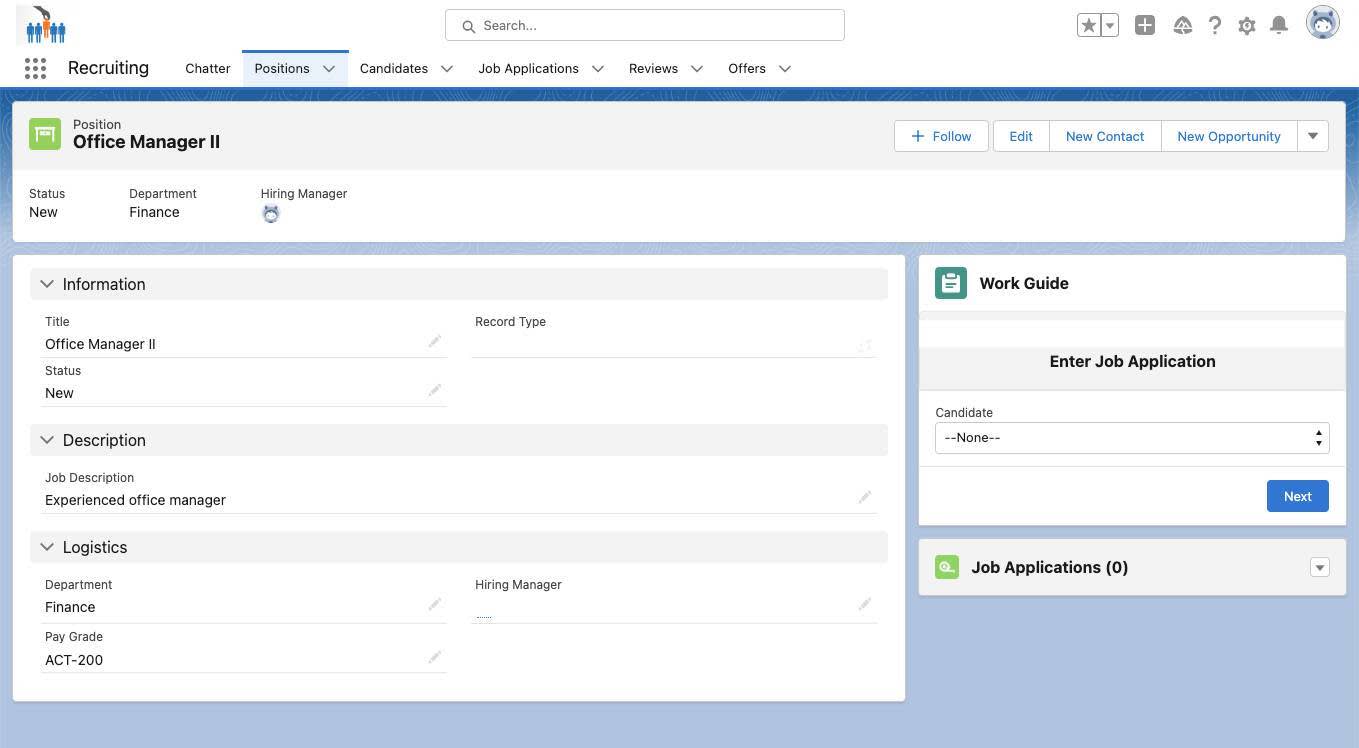
- Select a Candidate for the new position from the menu. Remember, candidates have not been pre-created in your developer org.
- Click Next.
Now that the job application has been created, we have automatically notified the candidate and it is time to proceed with the Phone Screen.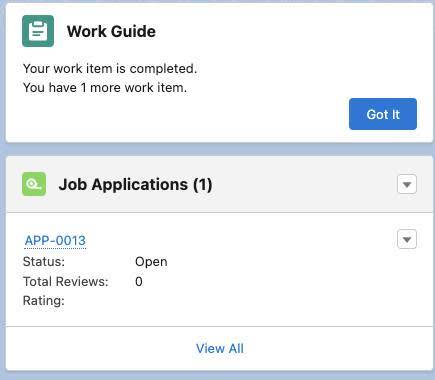
- Click Got It to see the next work item.
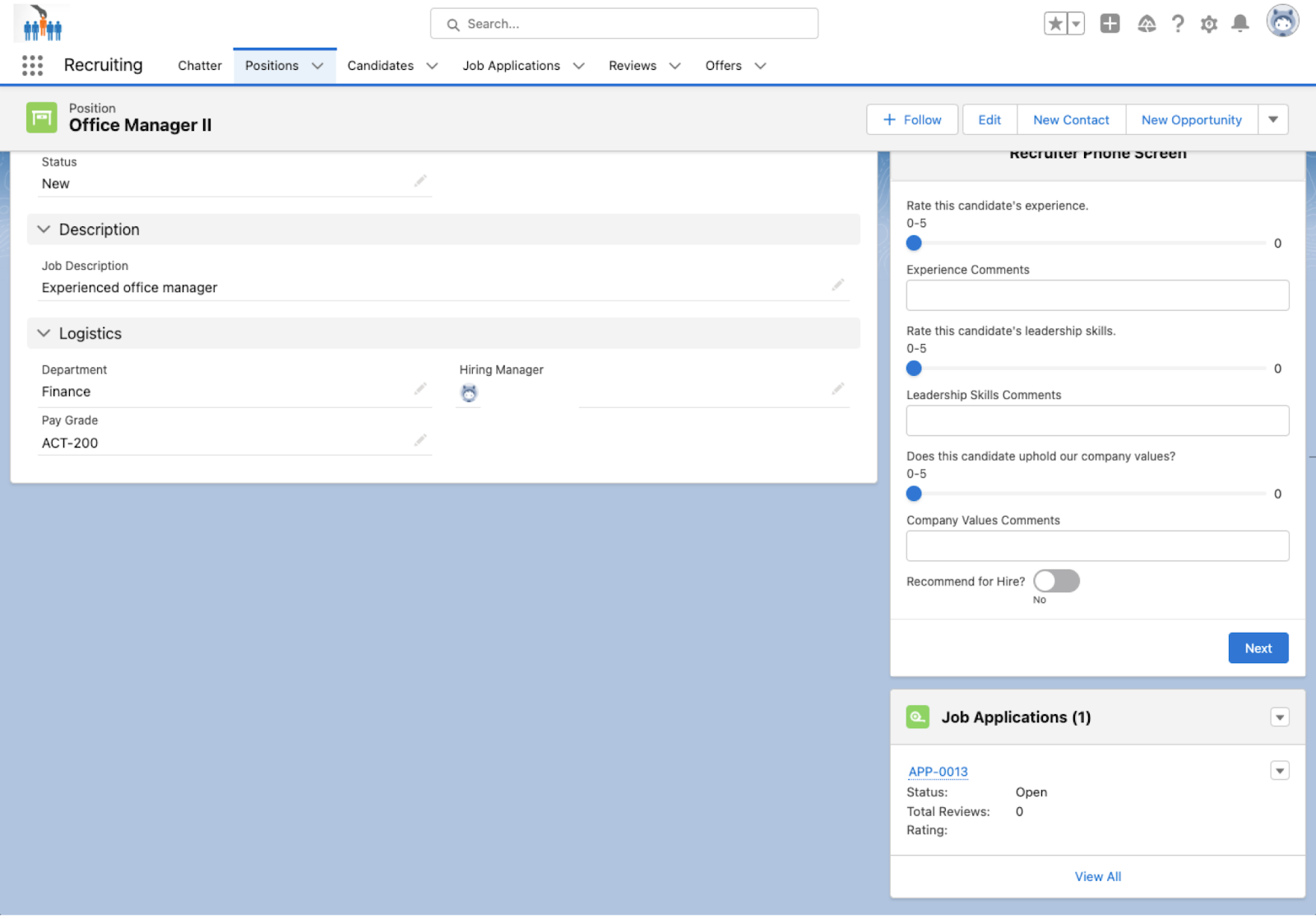
- This is where the recruiter rates the candidate for each company value on a scale of 1 through 5. Remember, we set our decision criteria so that a candidate needs a score of 3 or greater to proceed with a hiring manager interview.
- Next, the hiring manager has a similar work item in their Work Guide for their interview with the same candidate.
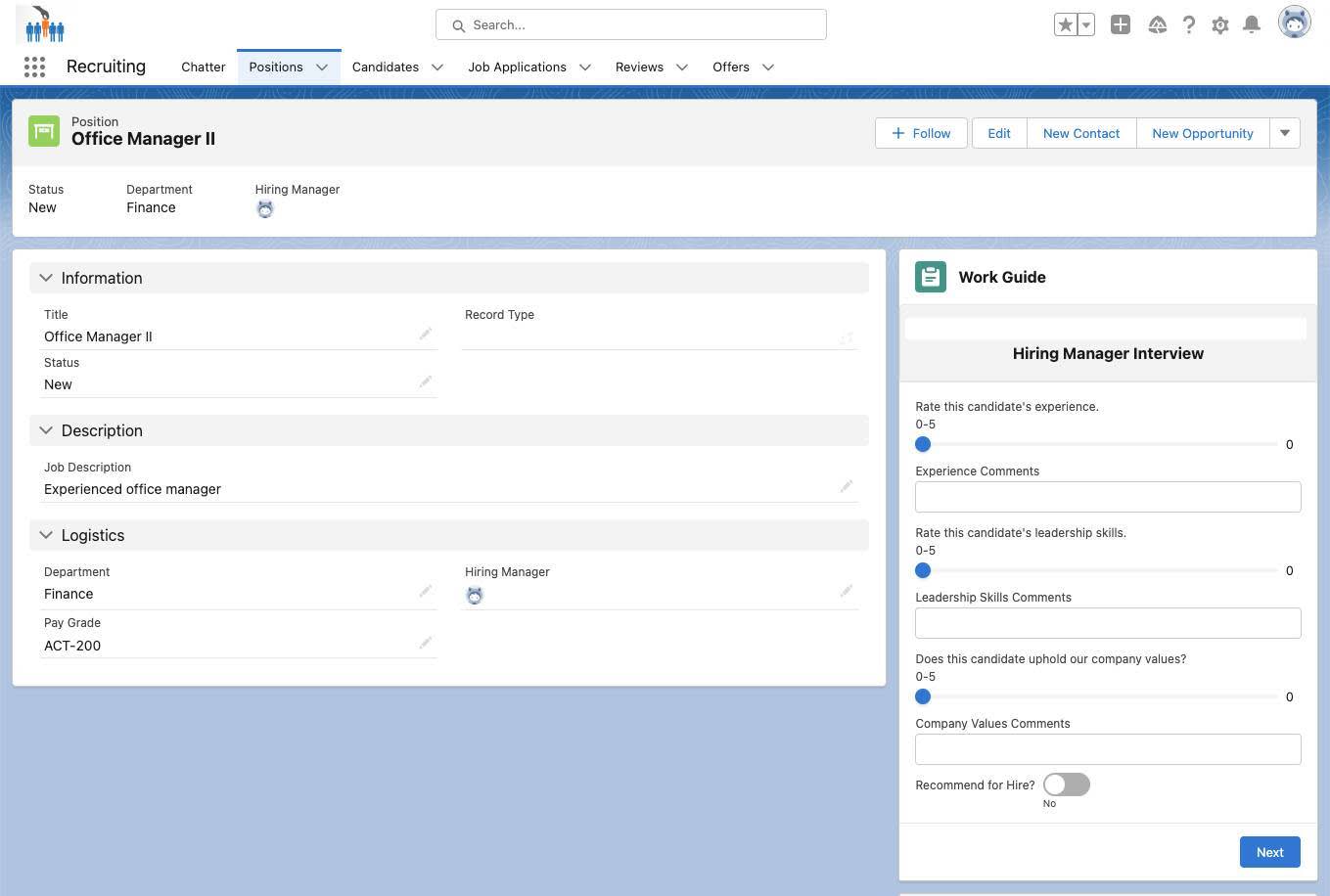
- If the Hiring Manager assigns a score of 3 or greater and recommends that the candidate be hired, they have a new work item to create the offer.
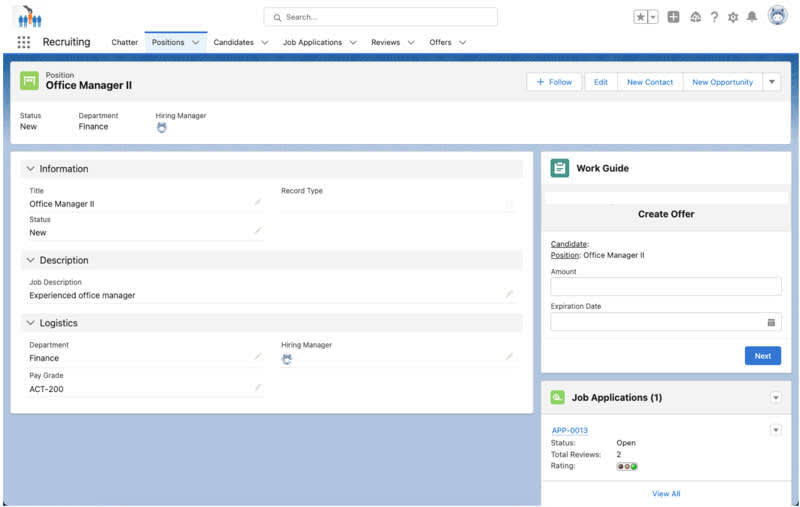
- When the salary and offer expiration date are entered, the candidate is officially hired!
Monitor Orchestration Runs
If you’re a Salesforce admin, you can use the Orchestration Runs tab to see all in-progress, canceled, and completed orchestration runs in your org. With this feature, admins can identify bottlenecks and opportunities for improvement as they track the performance of individual executions over multiple execution cycles.
You can view the status for orchestration runs.
Status |
Description |
|---|---|
Not Started |
The orchestration hasn’t started. |
Started |
The orchestration started. |
Completed |
The orchestration completed. |
Canceled |
The orchestration was manually canceled. |
Error |
|
To access the Orchestration Run tab:
- Click App Launcher.
- Click View All under Apps. You’ll see a list of the available items in your org in alphabetical order.
- Select Orchestration Runs.
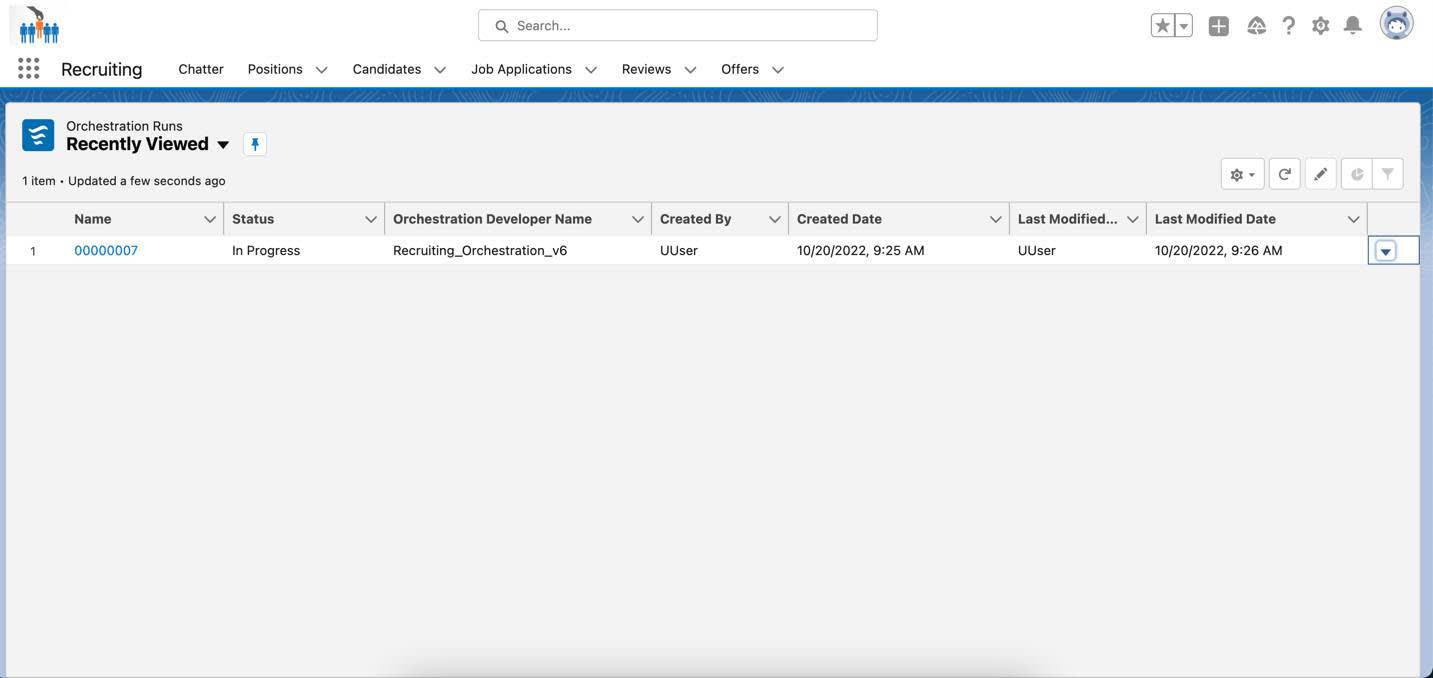
- To see details for a specific orchestration run, click the link for an orchestration.
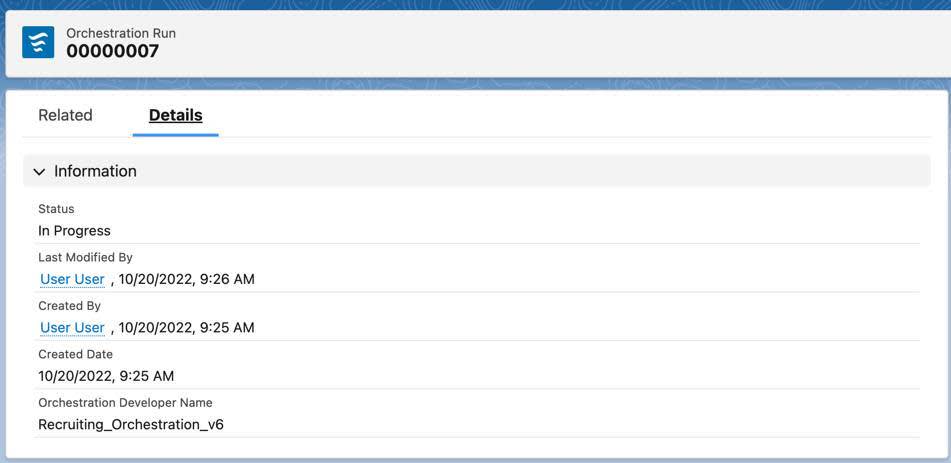
- Click the Related tab to see stages and steps details and access the run history for the orchestration.

This provides a step-by-step account of what’s been completed in the orchestration so far, who completed it, and how long it took. Use this information to identify bottlenecks and opportunities for improvement.
Cancel an Orchestration
You can cancel a running orchestration if you no longer need it to run. In the Orchestration Run view:
- Click the dropdown arrow for the orchestration run.
- Click Cancel Orchestration.

All pending work items will be terminated.
Debug an In-Progress Orchestration
You can debug an orchestration when it is in progress. Use this functionality to better understand the path an orchestration takes with different scenarios and the variable values at various points in the automation.
- In the App Launcher, find and select Orchestration Runs.
- On the Orchestration Runs page, from the dropdown for the desired in-progress orchestration, select Debug Orchestration.
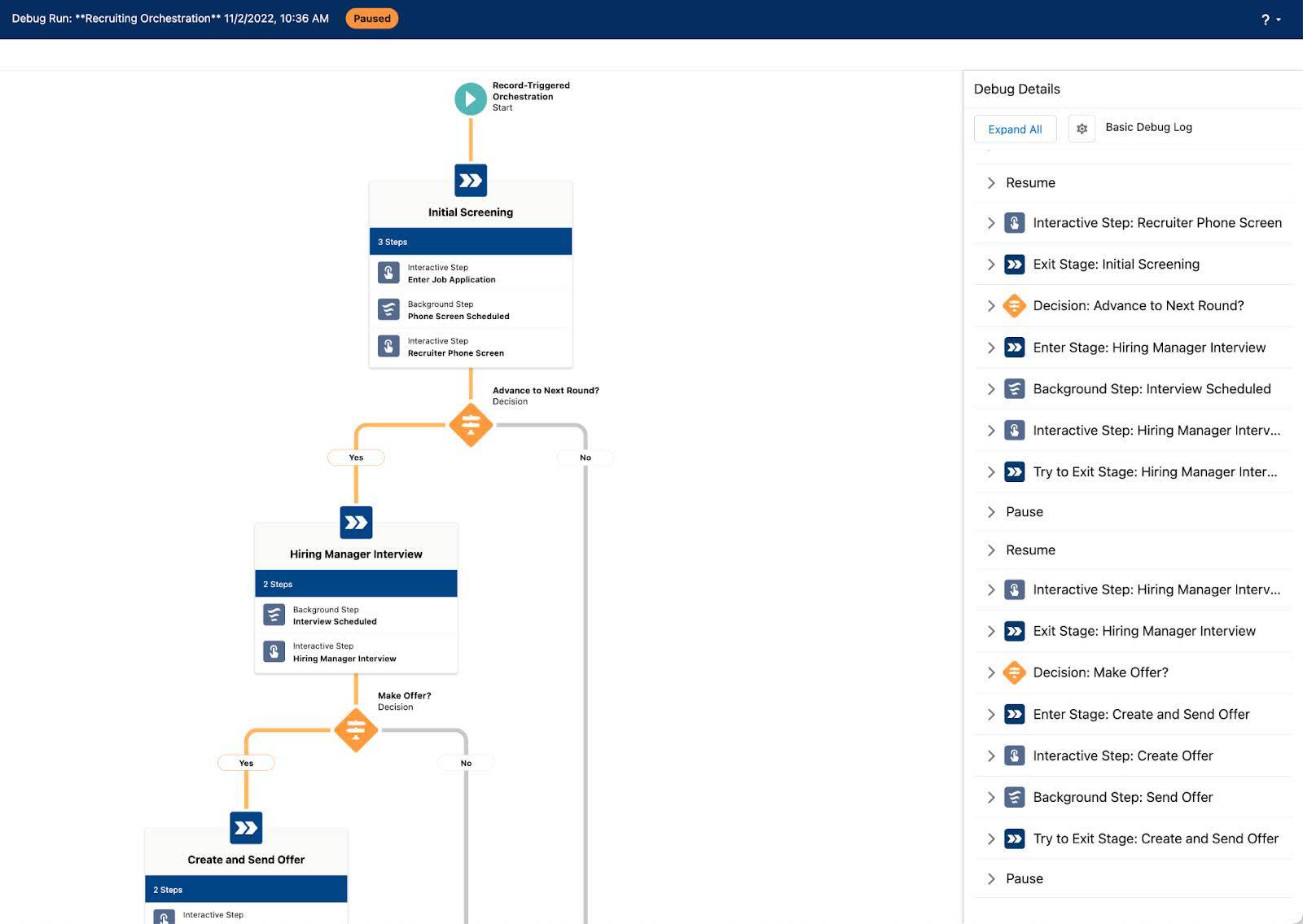
Follow the blue path for a snapshot of where you are in your orchestration. View the Debug Details for further detail for each step or decision executed in the orchestration run.
Orchestration Work Items
When an interactive step in an orchestration runs, it creates a work item and assigns it to a user, group, or queue. The orchestration then sends an email with a link to the specified record page to all assigned users.
Use the All Work Items list view to see all work items. Use the All Open Orchestration Work Items list view to see all assigned, but not completed, work items. Assigned users can see and access only their pending work items in the All Open Orchestration Work Items list view.
- Click App Launcher.
- Click View All under Apps. You’ll see a list of the available items in your org in alphabetical order.
- Select Orchestration Work Items.

To see assigned and completed orchestration work items, select All Work Items from the dropdown list.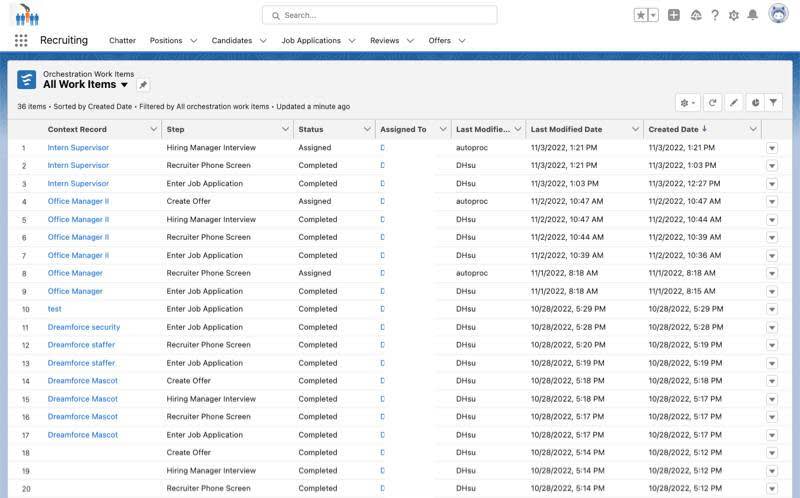
To see assigned orchestration work items, select All Open Work Items from the dropdown list.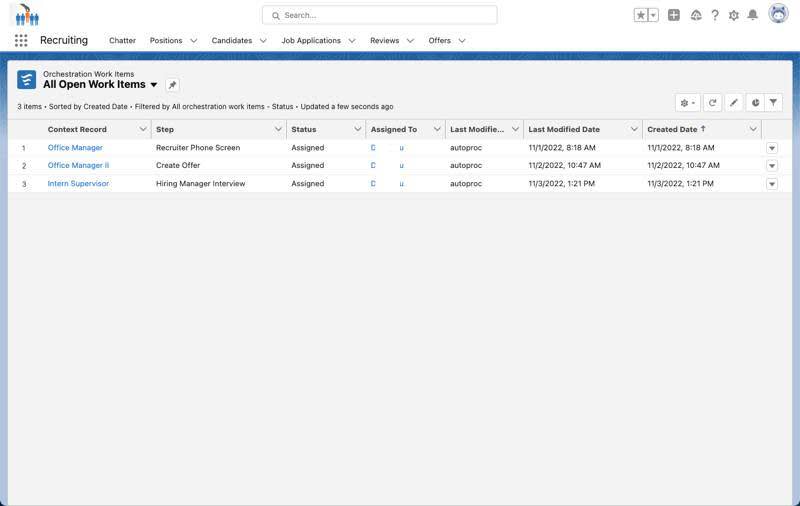
To see an assigned work item on its associated record page, click the assigned work item record in the list view.
Congratulations! Now you know how to run, monitor, and debug orchestrations! You know how to view Orchestration Work Items created by an orchestration. Experiment with the recruiting orchestration and add an onboarding stage. With the power of Flow Orchestration, the possibilities are endless.
